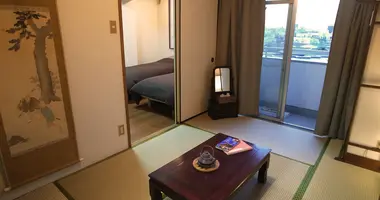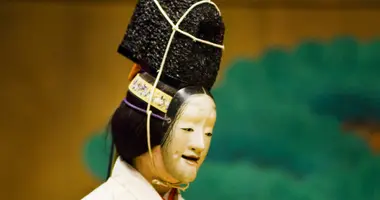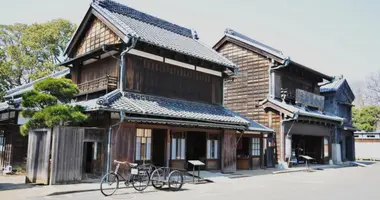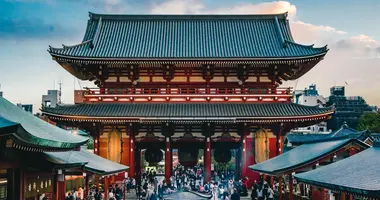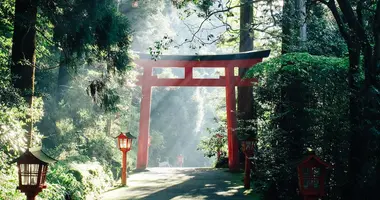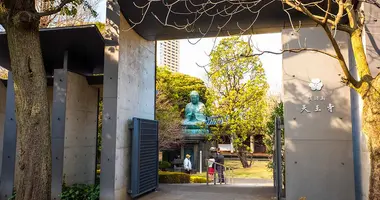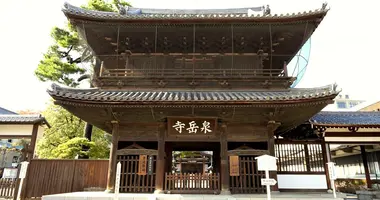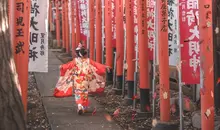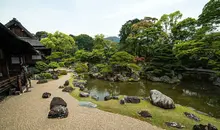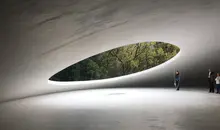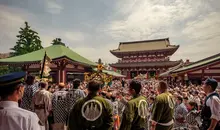Mitsumine Shrine: A Hidden Gem in Chichibu's Mountains
- Published on : 12/07/2024
- by : Japan Experience
- Youtube
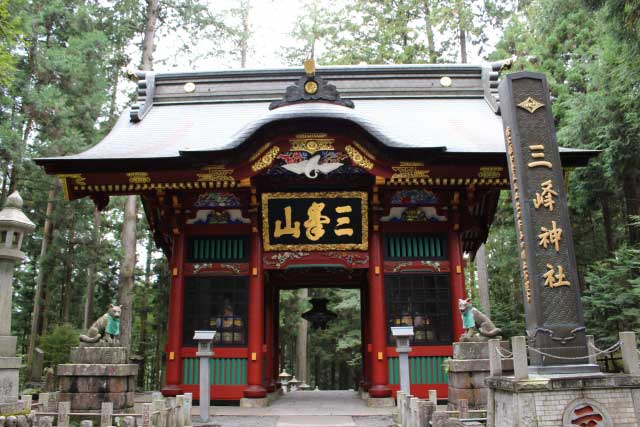
Zuishinmon Gate, Mitsumine Shrine
Nestled atop Mount Mitsumine in the Chichibu-Tama-Kai National Park, Mitsumine Shrine stands as a testament to ancient Japanese spirituality and craftsmanship. This mountaintop sanctuary, often described as one of Japan's most beautiful mountain shrines, offers visitors a unique blend of natural beauty, historical significance, and spiritual energy. With its rare wolf worship and intricate architectural details, Mitsumine Shrine provides a captivating experience for those willing to venture off the beaten path. Whether you're seeking a serene escape or a cultural adventure, this hidden gem in Saitama Prefecture promises an unforgettable journey into the heart of Japan's sacred mountains.
History and Significance of Mitsumine Shrine
Mitsumine Shrine's history stretches back to the mists of time, predating written records. According to the Kojiki, Japan's ancient chronicle of myths and early history, the shrine was founded around 150 CE by Yamato Takeru, a legendary prince known for his martial prowess. This connection to Japan's mythical past imbues the shrine with a sense of profound historical significance.
What sets Mitsumine Shrine apart is its unique dedication to wolf spirits, or "okami". In a departure from traditional shrine guardians, Mitsumine honors these now-extinct creatures as protectors against misfortune. This distinctive feature has made the shrine an important pilgrimage site for centuries, with devotees trekking from as far as Tokyo during the Edo times to seek the wolves' spiritual protection.
The shrine's importance is further underscored by its association with mountain asceticism, a practice that blends elements of Shinto and Buddhist traditions. This spiritual heritage is reflected in the shrine's architecture and rituals, offering visitors a glimpse into Japan's complex religious history.
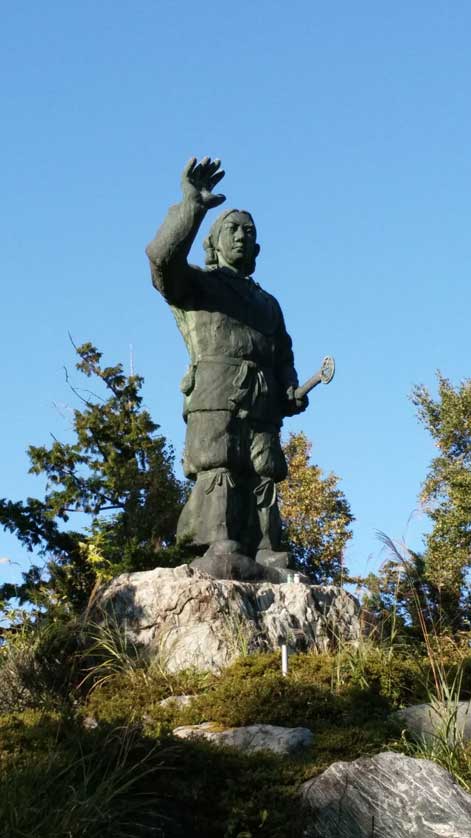
Statue of the mythical Yamato Takeru
Unique Features and Attractions
Mitsumine Shrine boasts several distinctive features that captivate visitors. The journey begins with the shrine's impressive torii gate, a rare triple arch design that marks the boundary between the mundane and sacred realms. Flanking this gate are stone wolf statues, a unique departure from the traditional komainu lion-dogs found at most shrines.
As you explore the grounds, you'll encounter the Zuishinmon Gate, a magnificent structure adorned with intricate wood carvings and vivid colors. The level of detail and artistry displayed here rivals that of the famous Toshogu Shrine in Nikko, making it a visual feast for architecture enthusiasts.
Another highlight is the small treasure hall near the entrance, which houses exhibits on the shrine's history, including wolf pelts and documents detailing the imperial family's connection to Mitsumine. This museum offers valuable insights into the shrine's cultural and historical significance.
For those seeking a more immersive experience, the shrine grounds include a ryokan with natural hot springs. Known as Mitsumine Shrine Hotel, this facility allows visitors to spend the night in the sacred precincts and enjoy a relaxing soak in the onsen after exploring the shrine.

Carvings on the main hall (honden) of Mitsumine Shrine
The Wolf Connection: Mitsumine Shrine's Distinctive Worship
The worship of wolves at Mitsumine Shrine is perhaps its most intriguing aspect. Unlike most Shinto shrines that venerate various kami or natural spirits, Mitsumine Shrine pays homage to the Japanese wolf, an animal long extinct but once revered as a powerful spiritual guardian.
In ancient times, wolves were considered holy creatures capable of protecting people's homes from fire and burglars. This belief was particularly strong during the Edo period when Tokyo (then called Edo) was prone to devastating fires and subsequent looting. The wolves of Mitsumine Shrine were seen as spiritual protectors against these urban calamities.
Throughout the shrine complex, you'll find numerous wolf statues and imagery, serving as a constant reminder of this unique spiritual connection. The wolf's role as a guardian is deeply ingrained in the shrine's identity, offering visitors a rare glimpse into a facet of Japanese spirituality that has largely faded from modern consciousness.
This distinctive form of worship not only sets Mitsumine Shrine apart from other religious sites in Japan but also provides a fascinating window into the complex relationship between humans, nature, and the spiritual realm in Japanese culture.
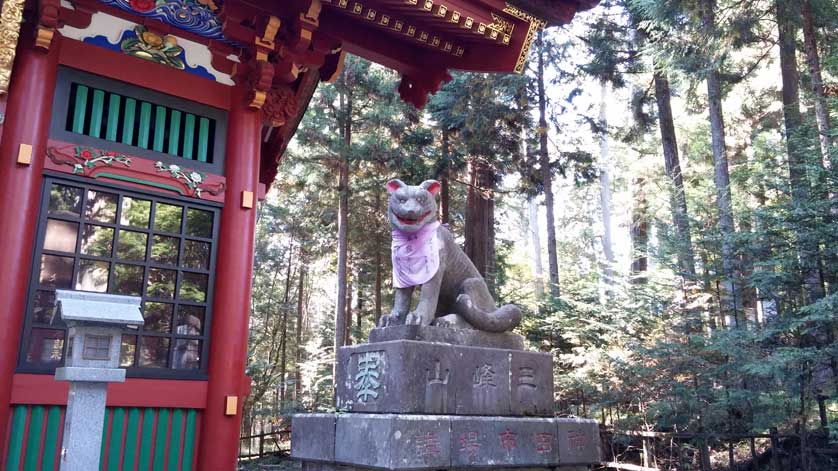
Wolf Statue, Mitsumine Shrine, Chichibu, Saitama
Architectural Highlights and Sacred Structures
The architectural splendor of Mitsumine Shrine is one of its most captivating aspects. The shrine complex showcases a harmonious blend of traditional Japanese design and unique decorative elements that reflect its long history and spiritual significance.
At the heart of the shrine stands the main hall (Honden), an impressive structure dating back to the late Edo Period. The building's exterior is adorned with an incredible variety of wood carvings, depicting flowers, animals, and mythical creatures in vibrant colors. Inside, visitors can admire lacquer work from the 16th century, showcasing the skill of artisans from centuries past.
The Zuishinmon Gate is another architectural marvel, featuring intricate carvings and vivid hues that rival the opulence of Japan Temples & Shrines like Nikko's Toshogu. This gate serves as a stunning prelude to the main shrine area, setting the tone for the visual feast that awaits visitors.
In front of the main hall, three towering cedar trees stand as natural monuments. These ancient trees, believed to be over 800 years old, are said to radiate spiritual energy. Visitors often touch these trees to "recharge" their spiritual reserves, adding an interactive element to the shrine experience.
The shrine grounds also feature several smaller family shrines, including one dedicated to the Tokugawa family who ruled Japan during the Edo era. These subsidiary shrines add layers of historical and spiritual depth to the complex, inviting visitors to explore and discover hidden gems throughout the grounds.
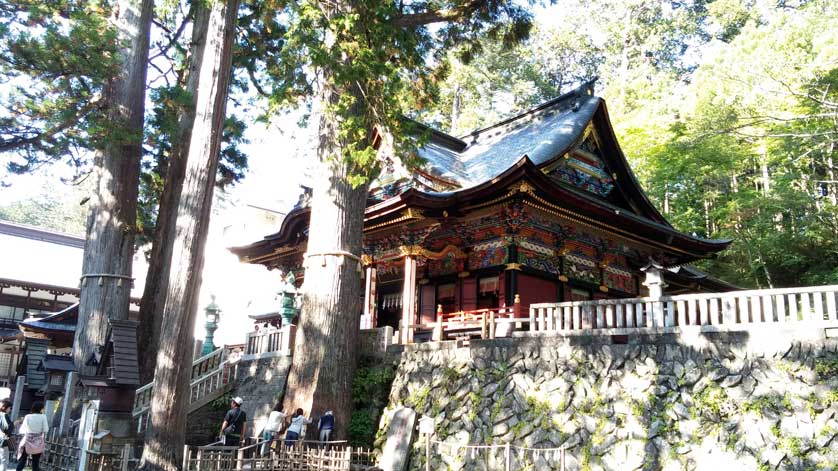
Cedar trees giving off energy, Mitsumine Shrine, Saitama Prefecture
Natural Surroundings and Scenic Views
Mitsumine Shrine's location atop Mount Mitsumine, at an elevation of 1,100 meters, offers visitors breathtaking views of the surrounding Chichibu mountains. The shrine's natural setting is an integral part of its appeal, providing a serene backdrop that enhances the spiritual atmosphere.
One of the most spectacular natural phenomena associated with the shrine is the "unkai" or sea of clouds. On certain days, usually in the early morning or during overcast weather, visitors can witness a mesmerizing sight where a thick blanket of clouds fills the valleys below, creating the illusion of a white sea surrounding the mountaintop. This ethereal view can be best appreciated from the shrine's Yohaiden, a small pavilion designed for distant worship.
The shrine is particularly beautiful during the autumn season, when the surrounding forest erupts in a riot of red, gold, and orange hues. This colorful display makes the journey to Mitsumine Shrine even more rewarding, offering visitors a chance to experience Japan's celebrated autumn foliage in a uniquely spiritual setting.
For hiking enthusiasts, Mitsumine Shrine serves as a gateway to the wider Chichibu-Tama-Kai National Park. Trails leading from the shrine connect to other peaks and valleys, including Mount Kumotori, the highest mountain in Tokyo prefecture. These hiking opportunities allow visitors to extend their spiritual journey into a full-fledged nature adventure.
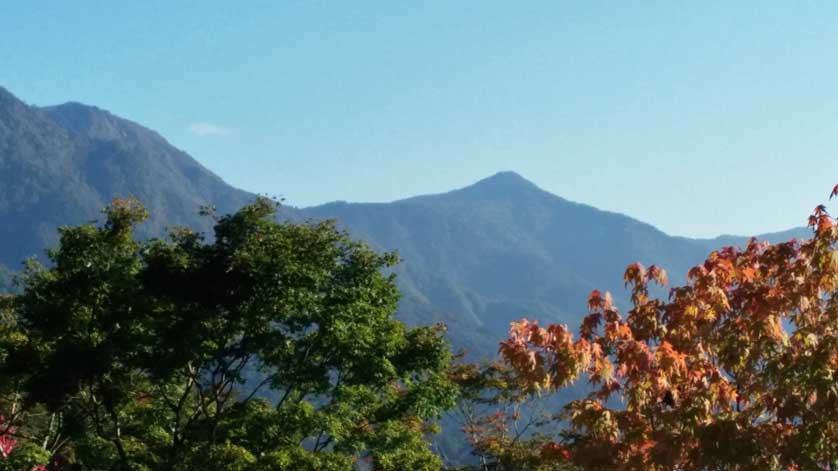
The view to Mount Kumotori
Visiting Mitsumine Shrine: Access and Practical Information
Reaching Mitsumine Shrine requires some planning, but the journey is part of the experience. The most common route begins at Ikebukuro Station in Tokyo, where visitors can board the Seibu Line's Red Arrow Express to Seibu-Chichibu Station. This train ride takes approximately 78 minutes.
From Seibu-Chichibu Station, a bus service operates to Mitsumine Shrine. The bus journey takes about 75 minutes and offers scenic views of the Chichibu region. It's important to note that bus services are limited, with only a handful of departures each day. The last return bus typically leaves the shrine at 4:30 PM, so timing your visit is crucial.
For those who prefer a more active approach, it's possible to hike to the shrine from the base of the mountain. The trailhead can be reached by taking a bus to the Owa bus stop. The hiking trail is relatively steep and takes about three hours to ascend, requiring proper footwear and a moderate level of fitness.
Once at the shrine, visitors can explore the grounds freely. The small treasure hall near the entrance charges a modest fee for entry. For those wishing to stay overnight, the Mitsumine Shrine Hotel offers traditional Japanese accommodation, including access to the onsen (hot spring bath).
It's advisable to check the shrine's official website (www.mitsuminejinja.or.jp) for the most up-to-date information on access, opening hours, and any special events or seasonal restrictions.
Nearby Attractions and Activities
While Mitsumine Shrine is the main draw, the surrounding Chichibu area offers several other attractions worth exploring:
- Chichibu Night Festival: If visiting in early December, don't miss this spectacular event featuring elaborate floats and fireworks.
- Nagatoro River Boating: Experience thrilling river rafting or leisurely boat rides through scenic gorges.
- Hitsujiyama Park: Famous for its stunning pink moss (shibazakura) display in spring.
- Chichibu Meisenkan: Learn about the area's traditional silk weaving industry.
- Mount Kumotori: For avid hikers, this peak offers challenging trails and panoramic views.
The Chichibu area is also known for its local delicacies, including soba noodle dishes and unique miso-potato snacks. Don't forget to pick up some local souvenir items to commemorate your visit to this enchanting region.
Whether you're drawn by the spiritual allure of Mitsumine Shrine, the natural beauty of the Chichibu mountains, or the rich cultural tapestry of the region, a visit to this area promises a deeply rewarding experience off the beaten tourist path. As you stand before the ancient cedars or gaze out over the sea of clouds, you'll understand why Mitsumine Shrine has captivated visitors for nearly two millennia.
